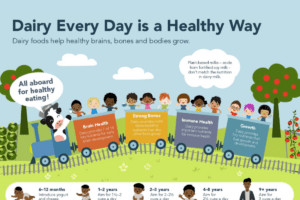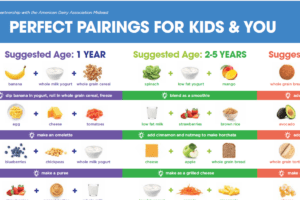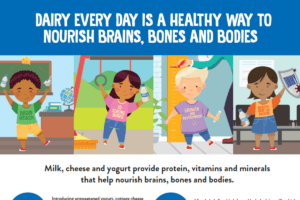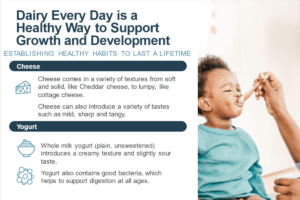Dairy every day is a healthy way to nourish kids’ brains, bones and bodies.
From delicious and nutritious cheese and creamy yogurt to cool, nutrient rich milk and refreshing smoothies, dairy is a fundamental part of American cuisine.
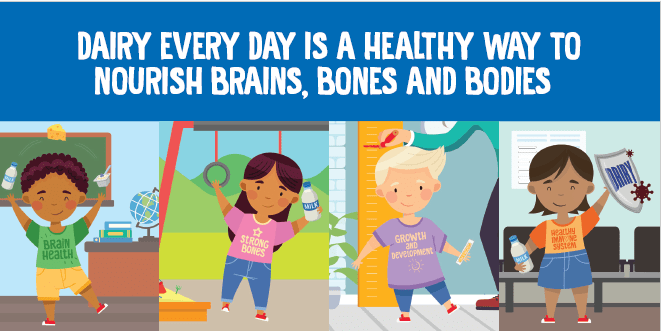
Benefits Go Beyond Bones
Not only do dairy foods make eating more enjoyable, they also provide important nutrients and health benefits that go beyond building strong bones.
For parents, dairy offers great first food choices for little ones, like yogurt and cheese for baby’s first bites and tantalizing options for older kids. Plus, by exposing your growing child to many foods, textures and tastes, you’re helping them learn to like a wide variety of nutritious foods, now and into the future.


